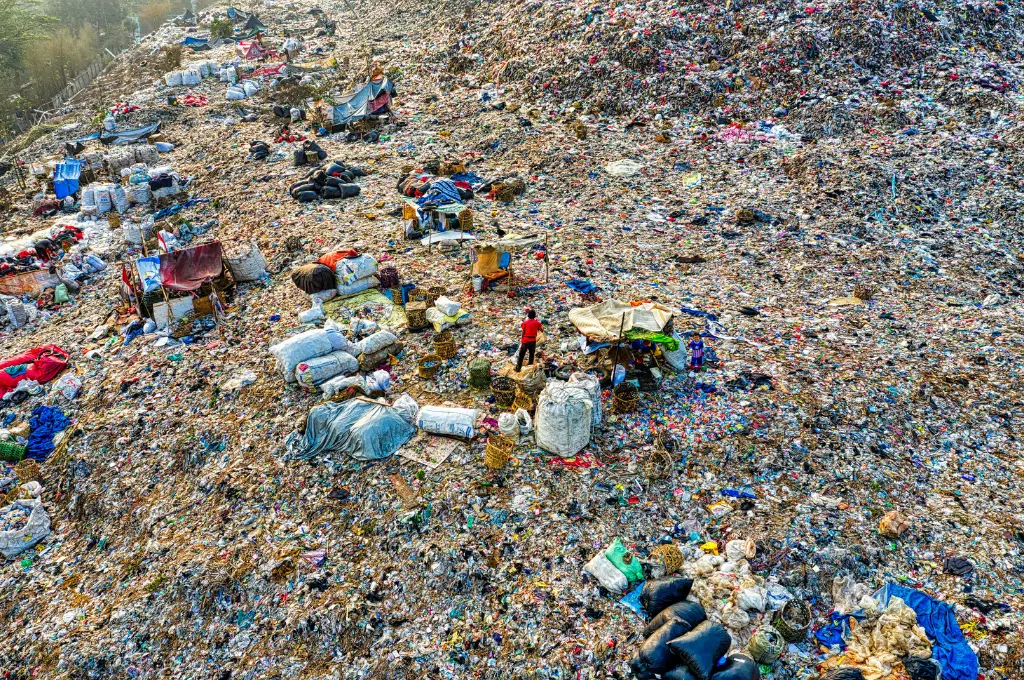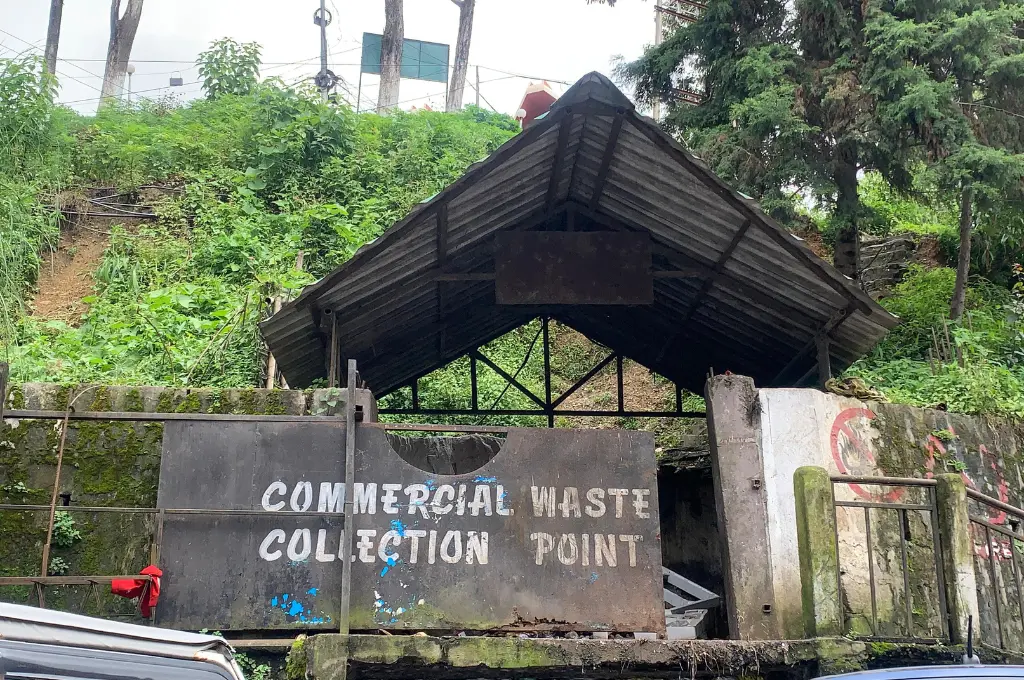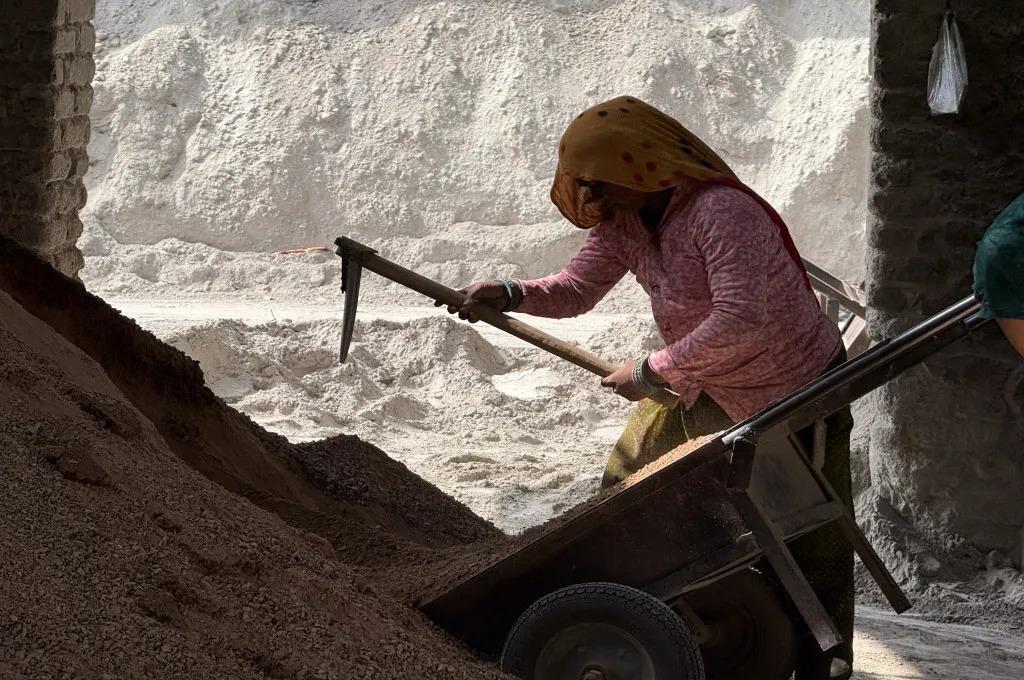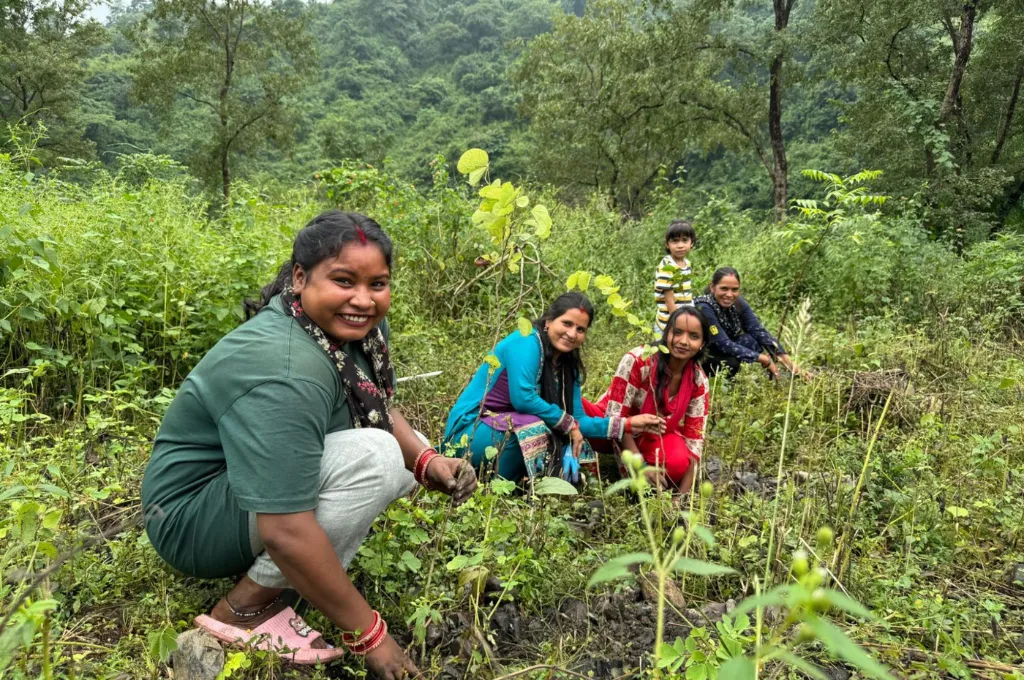With a sharp rise in its urban population, especially in cities such as Dimapur and Kohima, Nagaland is undergoing rapid urbanisation. In 2024, the state reportedly registered the highest urban population growth rate in India, witnessing a 66.7 percent increase since 2011. As a result, cities are grappling with the growing issue of waste management, with more than 300 tonnes of urban waste generated daily. This waste is primarily composed of biodegradable materials, followed by recyclable items, e-waste, construction and demolition debris, and hazardous waste.
The burgeoning refuse is putting pressure on the existing waste management infrastructure. In Nagaland, open landfills are the primary method of disposal, leading to uncontrolled dumping and environmental degradation. Poor drainage systems further compound the issue, with solid waste frequently resulting in roads being flooded with waste-laden water during monsoons.
In the state capital Kohima, the waste management system is decentralised, with the Kohima Municipal Council (KMC) responsible for overseeing commercial waste, providing infrastructure, and implementing policies, while ward committees manage household waste collection and local enforcement. KMC operates waste trucks, provides segregation bins, and runs awareness programmes, while colonies and wards handle daily collection, sanitation fee, and community engagement. However, any sort of effective waste management in Kohima would require going beyond the town area, as surrounding villages that may lack proper waste management systems also contribute to the landfill.
To learn more about the current state of waste management and possible solutions, I spoke with T Lanusenla Longkumer, former CEO of KMC; Pelenuo Yhome, founder of Zub Zub India, a social enterprise that provides cleaning services to residents, local governments, and corporates; and Khotuo Belho, the present chairman of AG Colony, a prominent locality in the city.
Here’s what the conversations revealed.
Collection, segregation, limitation
According to Lanusenla, the state of Nagaland continues to grapple with meeting the Phase 1 targets of Swachh Bharat Mission (SBM), while Phase 2 is already winding up across the nation. “By SBM 2, we should be collecting waste that is segregated, and have mechanisms where there is not a single piece of garbage lying on the streets. We are still dealing with segregation, which was the goal of SBM 1,” she states.
In the congested areas of Kohima, residents face a daunting challenge in managing waste, due to limited space for maintaining a proper dumping site in the wards. According to Khotuo, “We tried to maintain a dumping site in AG Colony, but it presented a problem for the ward’s sanitation workers because dogs would go through the garbage, leaving it lying around on the street. Due to limited human resources, it is difficult for the workers to collect the scattered trash, and lift it.”
This prompted the ward to decide that locality-to-locality collection by the truck on alternate days would be better for the residents. However, this method has its own problems. “Occasionally, the truck fills up before it has collected all of the waste from the area. And due to insufficient funds, [getting] an additional truck [is not possible]. On top of that, it’s increasingly hard to recruit sanitation workers, given that few people want to take on the job due to social stigma, health hazards, and lack of social recognition for their essential work; this leaves us with limited manpower to manage growing waste volumes,” shares Khotuo. In addition, the residents don’t segregate the waste into recyclable and non-recyclable garbage, which is mandated by the Solid Waste Management Rules, 2016.

Old habits die hard
The waste is supposed to be segregated from homes and then disposed of in the trucks. However, many residents do not follow the process.
Municipal councils, state departments, nonprofits, and educational institutions conduct awareness programmes on plastic and e-waste management, source segregation, and citizen responsibility. But there is a lack of behaviour change among Kohima residents. Lanusenla shares that for the last two decades, KMC, Nagaland Pollution Control Board, and Directorate of Urban Development Department, Nagaland, have carried out many such programmes. KMC has also deployed several street cleaning personnel to clean the main town areas. She says, “The main areas of the town are cleaned every day, and the workers wrap it up by 4.30 am to avoid traffic. Until 8 am, the streets remain clean, but by 9 am littering begins.”
Additionally, Pelenuo observes that the wet waste from marketplaces is often mixed with commercial and household waste and dumped together in the dumping sites.
The main areas of the town are cleaned every day, and the workers wrap it up by 4.30 am to avoid traffic. Until 8 am, the streets remain clean, but by 9 am littering begins.
Zub Zub India had initiated a pilot project at Forest Colony, Kohima, focusing on awareness and behavioural change regarding waste segregation. The response from residents was encouraging as many households began to actively segregate their waste. However, a major challenge was the failure of the waste collection system. The colony pick-up truck, which comes only once a week, collected all the waste together, undoing the residents’ efforts.
According to Pelenuo, “For waste segregation to be effective, the collection system needs a more structured schedule, with separate pick-up days for dry and wet waste. This would require more frequent waste collection on alternate days.” However, implementing such a system comes with additional costs, which would need to be covered through sanitation fees collected from each household.

Limited funding is a major bottleneck
Sustaining waste management initiatives in Nagaland remains a major challenge due to limited funding.
KMC receives restricted funds, and a lot of it is spent on vehicle maintenance, awareness drives, toll tax, etc. Additionally, ward committees are responsible for collecting INR 100 per kitchen per month from the households in their respective areas.
Khotuo says, “We use the money [received from the households] to pay our truck driver INR 11,000 per month, and the two sanitation workers INR 7,500 per month. We also provide 15 kg of rice to the workers each month [as an incentive].”
He adds, “Since it takes a full day to collect rubbish and then go dump it at the landfill, we pay each worker INR 900 per day for food. We don’t have anyone to replace them if they opt out, so we must look after them. Given the terrible state of the road leading to the landfill, the vehicle also needs upkeep.”
According to Lanusenla, these committees are supposed to pay 10 percent of their collections from the households to KMC. However, the committees struggle because the households refuse to pay the monthly sanitation fee, despite generating substantial waste.
The recycling gap
Ideally, waste such as organic matter should be composted, and recyclables should be processed separately. However, due to the lack of recycling facilities, much of the residual waste in Nagaland ends up in unsanitary landfills, increasing environmental and health risks. The issue is exacerbated by improper e-waste handling too. Scrap collectors strip electrical wires of materials such as copper and aluminium, discarding the plastic casings in the process, which triggers fires.
Lanusenla gives the example of the KMC landfill at Dzuruzou, located below Meriema village in Kohima district, which had been smouldering for six to seven years before being extinguished in 2022. She says that the air still carries the odour of the lingering gases.
There is no official data, but through its scrap collectors, KMC tries to ascertain the quantity of the waste being sent for recycling. Lanusenla observes that these scrap dealers salvage recyclable materials from both landfills and external sources, but they’re highly selective about what they collect. Currently, approximately 10 collectors gather metals and plastic bottles, but they reject the coloured plastic bottles because they are harder to recycle.
The Dzuruzou landfill smouldered for nearly seven years before being extinguished in 2022, and even today, the air is heavy with the stench of residual gases.
The lack of recycling plants in the state and the high cost of recycling worsens the issue. Nagaland has pellet-making machines, which help in compressing raw materials such as wood, agricultural residues, or organic waste into small, uniform pellets through a process of high-pressure extrusion. But common plastics such as carry bags cannot be processed in the machine as they burn easily. Lanusenla says, “We must find a mechanism that helps with recycling or upcycling these kinds of plastics. We have a composting plant, and with additional facilities, we can manage construction and demolition waste. We have even acquired a bottle crusher to process the numerous bottles that recyclers won’t accept. However, the machine remains non-operational due to a lack of suitable space, which we’re currently seeking. If KMC had the necessary funds, we would have made it happen. However, we’re struggling to pay our staff and rely heavily on central government schemes [such as SBM and Finance Commission Grants].”
Can stricter fines solve the problem?
According to Khotuo, new recycling outlets, sustained social and behavioural change communication, and stricter measures by KMC are crucial to managing urban waste. “If there was a store where recyclable waste could be sold, such waste could be gathered from every home by the sanitation staff and put up for sale. Residents would benefit in this way as they would be paid for their contributions, which would encourage them to recycle more. Additionally, this would create jobs.”
Further, he recommends creating short, powerful videos on waste collection and segregation that could be shared with residents over WhatsApp.
Both Lanusenla and Khotuo recommend stricter fines for residents to discourage them from littering. Khotuo says that the councils should mandate stringent action against those who don’t follow proper waste disposal methods. Even though in December 2024, KMC announced various penalties for improper disposal, non-segregation, and unauthorised burning of waste, the difficult part will be effective implementation and monitoring.
–





